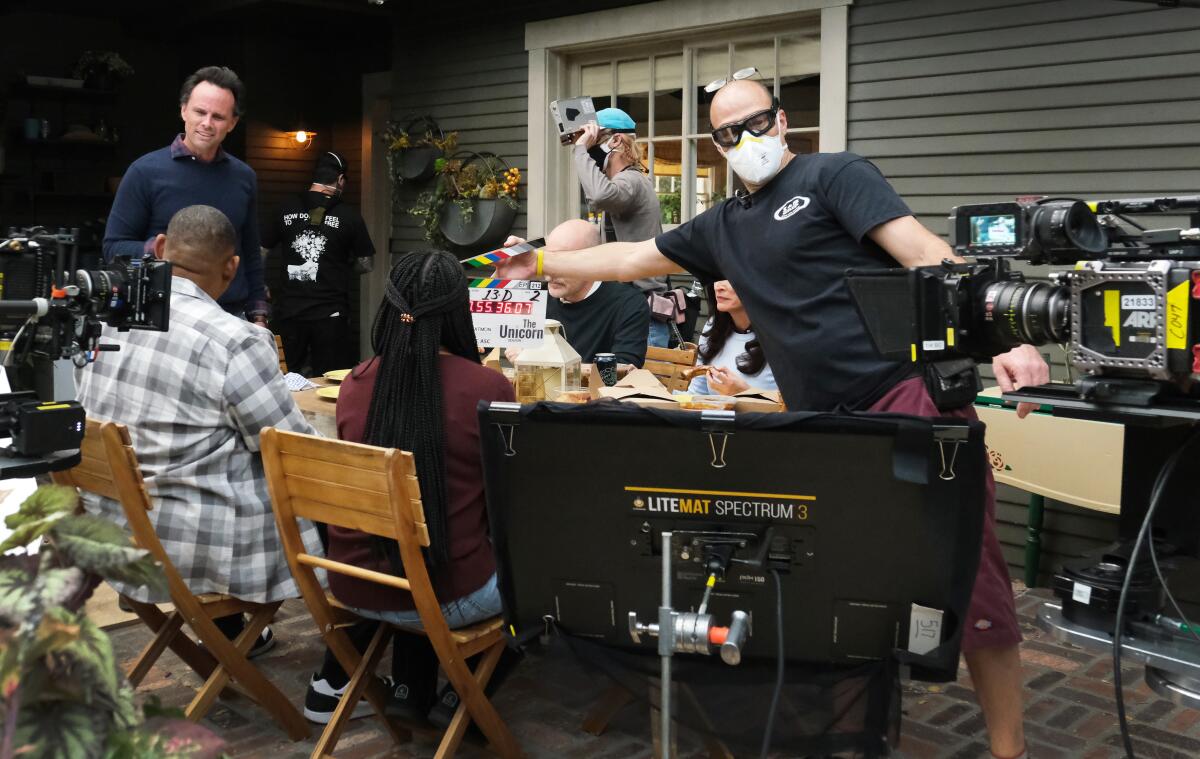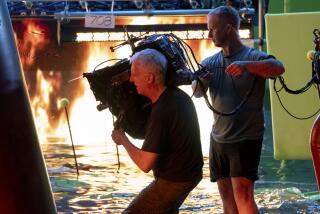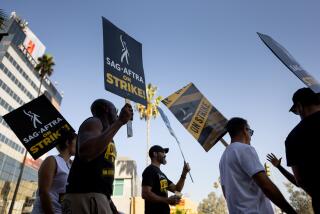Hollywood’s COVID safety measures aren’t going away anytime soon. Here’s why

Even with nearly 80% of Californians at least partially vaccinated, hospitalizations down from their highs and eased mask mandates, COVID-19 safety protocols on Hollywood film and TV sets are unlikely to go away soon.
An alliance of major studios and entertainment industry unions are once again at the bargaining table to renegotiate the so-called return-to-work agreement — the terms for working during the pandemic — that expires April 30. On Friday the deal was extended to allow more time for negotiations, according to a joint union statement.
Some people close to talks say they are expecting current measures that have suppressed outbreaks and shutdowns to remain . Moreover, most production insurance still excludes coverage for COVID-19 related losses and the vast majority of filming is going ahead regardless, said John Hamby, National Entertainment Practice Leader at Risk Strategies.
“That’s not going to change in the foreseeable future,” Hamby said. “A lot of producers out there are still taking extra steps and precautions, because no producer wants to have a film shut down.”
The easing of the pandemic presents the film and TV industry with a challenge. The protocols have kept outbreaks on set low, but they have slowed down production and added costs.
While hospitalizations and deaths from COVID-19 have fallen from the highs seen during the health crisis, epidemiologists are still cautioning unions about the long-term repercussions from virus outbreaks.
The Alliance of Motion Picture and Television Producers (AMPTP) and the unions agreed in February to extend the last return-to-work agreement and added requirements for vaccine booster shots as of March 15, according to the contract terms. There was a tightening up of mask usage, so that higher-quality face coverings, such as K95 or N95, are used when required on set. Productions were allowed to use cheaper and faster antigen tests, and casts and crews were given a new 10-day bank of COVID-19-related sick leave.
It has been nearly a year since producers have been able to mandate vaccinations to all cast and crew working around unmasked actors in so-called Zone A of sets. So far, a large majority of film productions, around 70%, are asking crews working in that highest risk area to be vaccinated, insiders say.
However, producers are expected to seek greater flexibility from unions on what safety protocols they can impose on cast and crew. Some want to see an easing of some of the restrictions while others have sought permission from unions to impose a vaccination mandate on all cast and crew, not just those in Zone A, people close to talks said, who were not authorized to speak publicly.
Production-wide vaccinations have also helped producers secure insurance policies in some cases to cover COVID-19 risks and it could also help meet the demands of some A-list actors and directors who have added vaccination requirements as part of their contracts, one of the people said.
For example, last summer Sean Penn objected to returning to the set of the Watergate drama “Gaslit” last year unless the entire cast and crew was vaccinated, Variety reported.
“There are some boutique facilities offering COVID insurance as long as you have the protocols in place and require vaccinations,” said Brian Kingman, managing director of the entertainment practice at Illinois-based insurer Gallagher.
Unions such as SAG-AFTRA, which represents actors and other performers, may be reticent to loosen any of the protocols. One concern for unions is that epidemiologists report that some cases of the virus lead to long-term complications, known as long COVID. And unlike regular workplaces, performers are often asked to do intimate scenes or have close contact in fight scenes with other actors, putting them at greater risk than in traditional workplaces.
Current protocols include social distancing, limiting the number of crew that can be in trailers or transport buses, requirements for sanitization of equipment and facilities. However, the current agreement allows for reduced testing or masking depending on the infection rates.
During the health crisis, producers have shifted filming locations and taken on costly safety measures to keep cameras rolling.
But the risks of a shutdown from a COVID-19 outbreak has become a big burden for independent filmmakers. In 2020, nearly 400 feature film projects either moved overseas or disappeared, according to the Independent Film & Television Alliance, the global trade group for independent distributors and producers. Moreover, Hamby estimates the cost of insurance premiums for productions have risen upward of 50% since before the pandemic.
California estimated 50 productions spent about $90 million on COVID-19 safety last year. Feature films with budgets of more than $20 million in the state’s tax credit program were expected to spend 5% to 6.5% of their total budgets on COVID-related costs, according to a report from the California Film Commission.
“The cost of protocols adds over 10% to a budget, and for an independent producer to shoulder that cost, it could break the project,” said Kingman said.
Inside the business of entertainment
The Wide Shot brings you news, analysis and insights on everything from streaming wars to production — and what it all means for the future.
You may occasionally receive promotional content from the Los Angeles Times.
More to Read
Inside the business of entertainment
The Wide Shot brings you news, analysis and insights on everything from streaming wars to production — and what it all means for the future.
You may occasionally receive promotional content from the Los Angeles Times.







